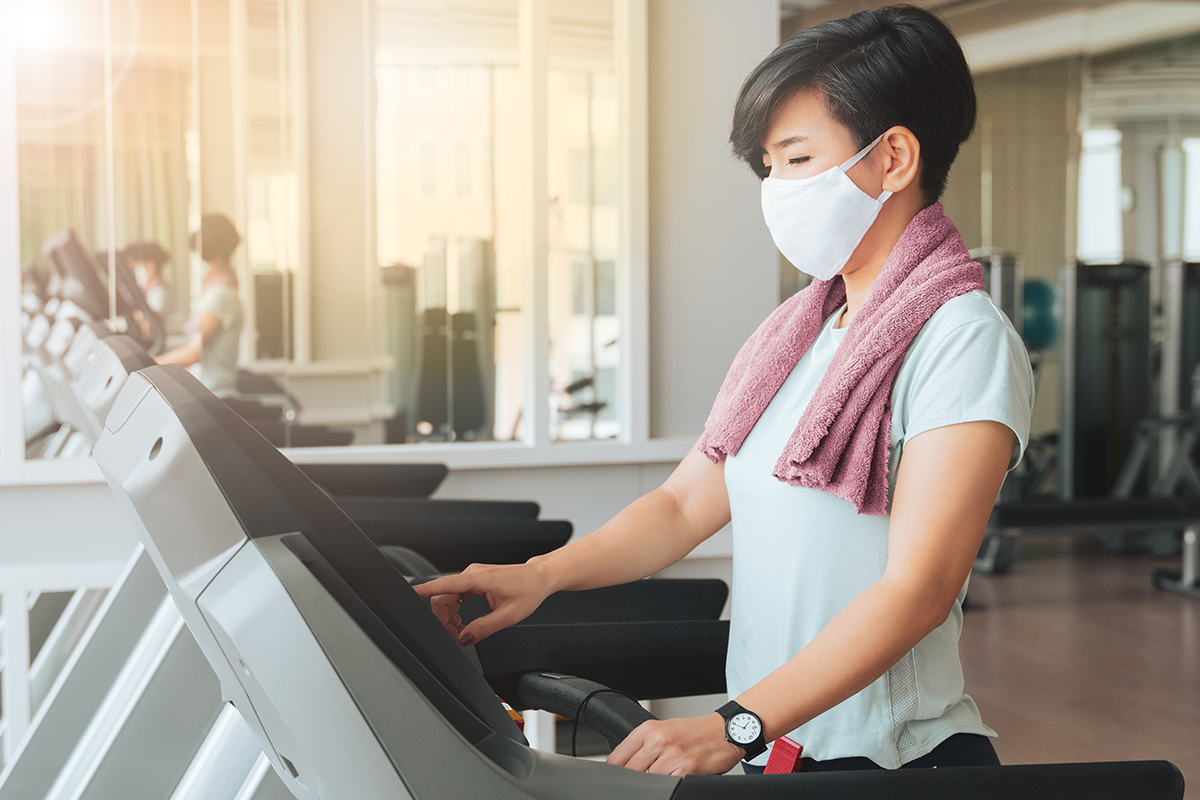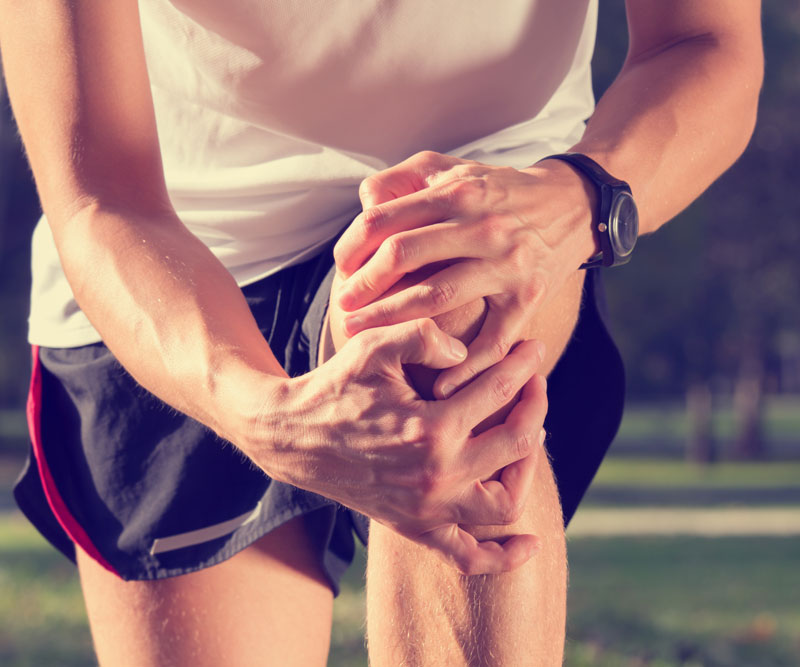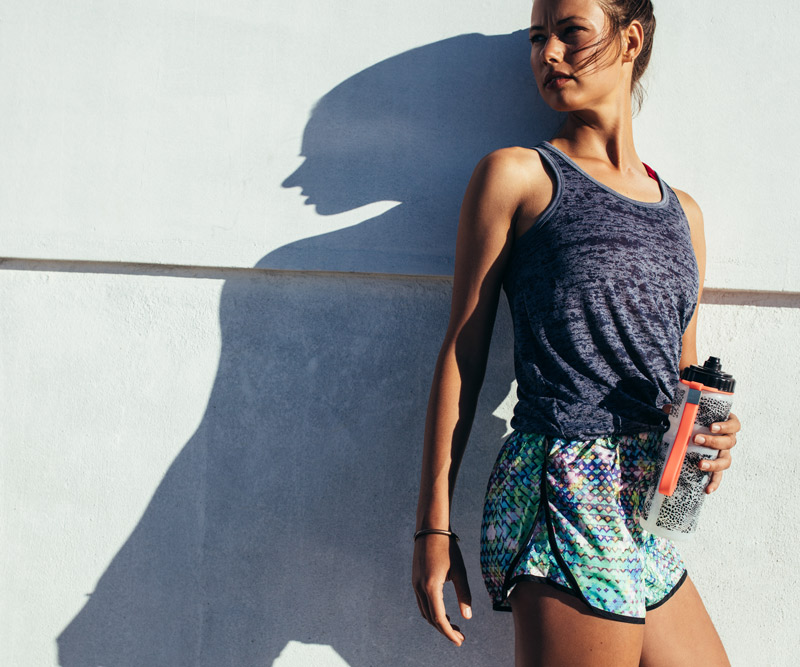
Tips for Exercising During the Coronavirus Pandemic
Maintaining a physically active lifestyle can be challenging enough with most people juggling busy schedules. Add the challenges of the COVID-19 pandemic – stay-at-home orders, gym closures, wearing a mask when exercising – and it can be hard to find the motivation to get up off the couch. However, at a time like this, it’s even more important to be as active as possible.
Here are some common questions I have received from my patients with some tips to help you exercise safely.
As COVID-19 continues to be a concern in the community, people have found it difficult to exercise, especially with concerns about leaving home. What are the benefits of exercise and should we be exercising during this time?
You should still try to exercise and fit in regular physical activities to your daily routine despite COVID-19. National physical activity guidelines state that physical activity is good for our overall health for the following reasons:
- Supports normal growth and development
- Improves mood and regular daily function
- Reduces the risk of many chronic diseases, such as heart disease, stroke, high blood pressure, diabetes, certain cancers (bladder, breast, colon, endometrium, esophagus, kidney, lung, and stomach), and dementia
- Reduces anxiety and depression
- Improves sleep quality
- Better weight management
- Improves bone health
- Reduces risk of falls in older adults
With the stress and anxiety many people are experiencing due to the COVID-19 pandemic, exercise can also play an important role in improving your quality of life during this challenging time.
Adults should have between 150-300 minutes of moderate intensity aerobic exercise or 75-150 minutes of vigorous intensity aerobic exercise per week. These sessions do not have to be all at once and can be broken down into smaller segments, such as 30 minutes a day, 5 days a week. Adults should also do muscle strengthening activities 2 or more times a week.
If I wear a mask while I walk or ride my bike, do I run the risk of passing out from a lack of oxygen?
It is safe to wear a mask or face covering during light activities, such as walking or biking, without significantly decreasing your oxygen intake. If you do more intense exercise and are not able to wear a mask, you should practice proper physical distancing. If you exercise with a group, you should wear a mask and practice physical distancing, if possible. Of course, government mandates regarding mask requirements in public spaces, including outdoors and when exercising, should always be followed. If you have any concerns, ask your physician about safely starting a new exercise program or routine.
How important is hydration while exercising?
Hydration is important to replenish the fluids lost during exercise, but you should not rely on thirst to determine when you are dehydrated. You should drink water and stay hydrated throughout the day, not just during or after exercise. You may find yourself not drinking as much water due to wearing a mask, but you should keep in mind that it is important to drink fluids regularly throughout the day.
What are some good activities that allow me to physically distance so I can stay active and get some exercise?
Walking, jogging, biking, swimming, exercise videos, and home exercises, such as yoga, weight lifting, body weight exercises, and tai chi can all work for you. There are some gyms that are also doing virtual exercise classes.
What are some common injuries that I should be aware of if I haven’t exercised in a long time and how can I treat and/or prevent these injuries?
Some common injuries include patellar tendinitis (jumper’s knee), patellofemoral syndrome (runner’s knee), iliotibial band syndrome (IT band syndrome), rotator cuff strain and tendinitis, plantar fasciitis, low back strain, hip strain and tendinitis, and worsening arthritis. Some patients may have specific injuries that cause the pain but keep in mind that some patients may have pain since they are not as active as they had been before the COVID-19 pandemic. Muscle stiffness and tightness are possible due to people not doing their regular exercises. Recently, I have seen an increase or worsening of arthritis pain in some of my patients because they have not been doing their regular exercises during the pandemic, which can lead to stiff muscles and joints.
Most of these injuries can be treated at home with rest and ice to the injured area. Over-the-counter medications, such as ibuprofen and acetaminophen, can be helpful to reduce inflammation. Be sure to check with your primary care physician first before taking any medication. If pain to the injured area does not improve in a few days to a week, or if there is concern about a serious injury, contact your physician or primary care provider. A physician can better assess your injury with a physical exam and imaging, if necessary.
I’m worried about coming into a clinic due to concerns about COVID-19? Are there safety protocols in place? What about other options?
All Hawaii Pacific Health facilities and clinics have been taking precautions to help make your visit safe, including ongoing cleaning and sanitation measures. We are screening all patients before entry, limiting entrance points, spacing out appointments and adjusting waiting rooms to reduce crowding, and requiring all patients to wear masks while on property. Our staff also wear the appropriate personal protective equipment (PPE) for the level of care being provided to our patients. If you do not feel comfortable physically visiting one of our clinics, we also offer a variety of telehealth options to connect with your physician, including phone and video visits, if it’s appropriate for the specific care you need. You can discuss these options with your physician or care team when scheduling your appointment.
Published on: March 23, 2021





